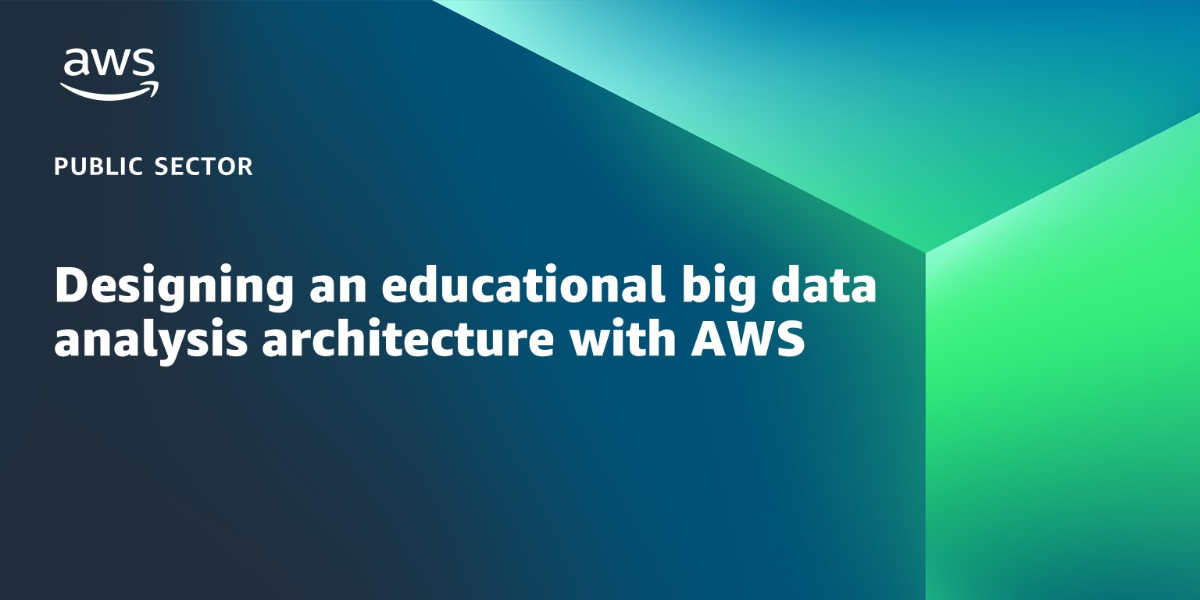AWS Public Sector Blog
Tag: big data
Designing an educational big data analysis architecture with AWS
In this blog post, learn a high-level architecture, built on AWS, that uses a graph database to analyze unstructured and structured educational data that can, for example, help inform a recommendation to a student for the appropriate courses to take in their next semester based on multiple personalized data factors.
Calming airport data turbulence with EASE
Airports receive data from dozens of disparate sources, but this data can lack the collective unity needed to see the bigger picture. The Cincinnati Northern Kentucky International Airport (CVG) saw an opportunity to turn down the proverbial volume on their data. Using AWS, CVG created a first-of-its-kind tool using data for predictive analytics and proactive notifications, now known as Enterprise Awareness & Situational Exceptions (EASE).
How to create a cybersecurity analytics platform with AWS analytics and machine learning
Cybersecurity analytics is a systematic methodology designed to collect, ingest, process, aggregate, and analyze security events. This methodology empowers organizations to proactively perform security investigations, powered by advanced analytics and machine learning (ML), which help mitigate cyber issues more effectively and efficiently at scale. Learn about the core components of a cybersecurity analytics framework and how organizations can use AWS to design a cybersecurity analytics platform with analytics and ML services.
How KHUH built a long-term storage solution for medical image data with AWS
King Hamad University Hospital (KHUH) and Bahrain Oncology Center is a 600-bed-hospital in Bahrain. Over the years, KHUH faced constraints with exponential growth of their on-premise storage needs, particularly with the medical images stored by their picture archiving and communication system (PACS). KHUH turned to AWS to develop a cost- and time-effective long-term storage solution, without making changes to their existing PACS, that reduced storage costs by 40%.
Transforming radiology workflows with clinical decision support powered by AWS
The healthcare technology (HealthTech) startup contextflow uses AWS to power its clinical decision support system that can help radiologists diagnose patients faster and with more accuracy. The software can search, retrieve, and compare historical diagnostic data to help guide radiologists in writing reports. It is currently being utilized to analyze lung computed tomography (CT) scans for interstitial lung diseases (ILD), chronic obstructive pulmonary disease (COPD), and lung cancer screenings.
How to deliver performant GIS desktop applications with Amazon AppStream 2.0
Geospatial datasets are increasingly large, reaching terabyte and even petabyte scale, which can cause many challenges for geospatial analysts and educators–but Amazon AppStream 2.0 can provide some solutions. In this blog post, we walk through how to deploy QGIS, a no cost, open-source geospatial information system (GIS) application used by geospatial analysts, in Amazon AppStream 2.0. We also load an example dataset to demonstrate how desktop GIS application users can access large, cloud-hosted geospatial datasets with high performance by keeping the data and compute components together on the cloud, and streaming the desktop application instead of downloading the data itself.
How researchers at UC Davis support the swine industry with data analytics on AWS
A research team led by Dr. Beatriz Martinez Lopez at UC Davis supports pig farmers with a data analytics platform that aggregates and analyzes animal health data to diagnose animal viruses and diseases. But this platform was primarily designed for analysts and data scientists. To truly transform animal disease management, Martinez-Lopez wants to put this data analytics tool into the hands of farmers around the world. So the research team is using the scalable, cost-effective tools of the AWS Cloud, along with a research grant letter of support from AWS, to make this optimized platform a reality.
Preventing the next pandemic: How researchers analyze millions of genomic datasets with AWS
How do we avoid the next global pandemic? For researchers collaborating with the University of British Columbia Cloud Innovation Center (UBC CIC), the answer to that question lies in a massive library of genetic sequencing data. But there is a problem: the data library is so massive that traditional computing can’t comprehensively analyze or process it. So the UBC CIC team collaborated with computational virologists to create Serratus, an open-science viral discovery platform to transform the field of genomics—built on the massive computational power of the Amazon Web Services (AWS) Cloud.
Analyze terabyte-scale geospatial datasets with Dask and Jupyter on AWS
Terabytes of Earth Observation (EO) data are collected each day, quickly leading to petabyte-scale datasets. By bringing these datasets to the cloud, users can use the compute and analytics resources of the cloud to reliably scale with growing needs. In this post, we show you how to set up a Pangeo solution with Kubernetes, Dask, and Jupyter notebooks step-by-step on Amazon Web Services (AWS), to automatically scale cloud compute resources and parallelize workloads across multiple Dask worker nodes.
How MTI tracks social distancing efforts with the AWS Cloud and big data
Maryland Transportation Institute (MTI), an interdisciplinary research and education organization based out of the University of Maryland, focuses on solving complex transportation problems. When COVID-19 hit, MTI was presented with an urgent new problem: the organization was tasked with gathering, processing, and reporting daily transportation data from nearly 65% of the US population. To keep the public safe, they needed more computing power—quickly. They used the AWS Cloud.









